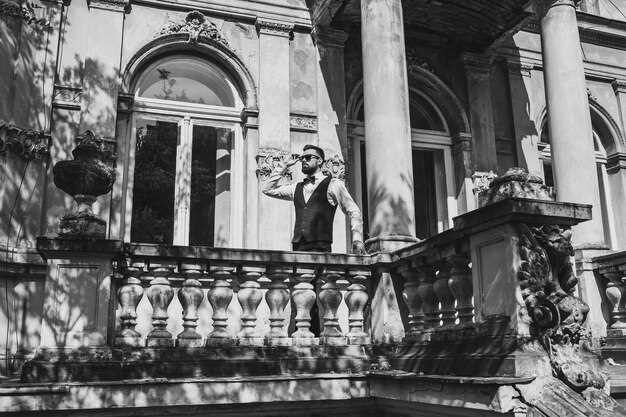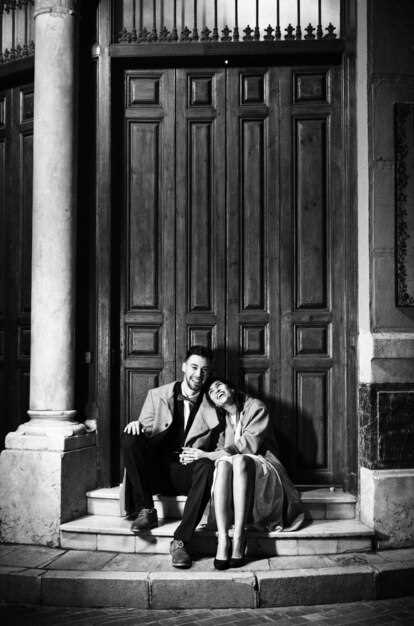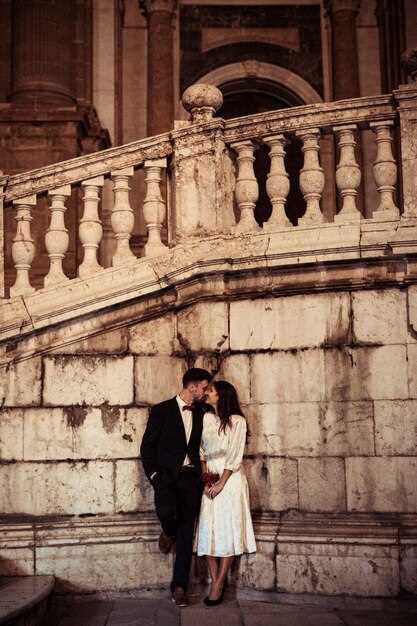
Plan your visit for early morning light and start upstairs before the crowds. The Musée Jacquemart-André sits in a private hotel building in the arrondissement of Paris, offering a concise window into 19th-century life. In that year, thousands of visitors wander these rooms and discover how these artists and collectors shaped a new course of taste; read about the couple’s favorite works, the salon’s elegant rhythm, and the quiet drama of daily life that unfolds over hours in printemps light.
From the moment you step in, you feel how the artistic narrative travels through rooms that connect upstairs suites to the quiet library below. These spaces balance a abbey-like hush with lively conversation, inviting you to read the details on walls and chairs and to imagine how these artists lived and entertained together, as you take a brief walk around the courtyard.
The collection blends Italian Renaissance paintings with Dutch and Flemish masters and French scenes from the 18th century, assembled by the couple to frame daily life as art, chosen by themselves. These rooms offer these moments to pause, compare textures, and appreciate how art and interior design speak to one another, guided by clear labels that help you read the intent behind each arrangement.
Practical tips: buy a timed ticket online, arrive a bit before opening, and allocate 60–90 minutes for a focused stroll. The museum sits in the arrondissement 8 and is reachable by metro lines that run through central Paris, with a short walk to nearby cafés for a coffee break. Read the wall labels to connect the pieces with the year and the couple’s social world; let printemps light color your impressions.
As you leave, carry these impressions into the street and share them with others together. This intimate slice of Parisian life makes it easy to linger in memory, not as a tourist checklist but as a conversation between rooms, stories, and the city itself.
Practical Guide for a Visit to Jacquemart-André
Begin your visit by purchasing tickets online through the museum’s official site to skip checkout lines. The house sits at 158 Boulevard Haussmann, located in the 8th arrondissement, and its façade and rooms offer a slice of 19th-century Parisian life. The home was born from the taste and ambition of its patrons and remains a model of Parisian grandeur.
Plan ahead with a timed slot and notice the security procedures at the entrance. Tickets can be bought online or at the desk, but online checkout helps you begin your day without delays. Sortiraparis often highlights peak times, so thats why online booking is recommended, especially in december when crowds surge.
- Tickets and entry: Buy online for a guaranteed time; the process is simple, and you can download or print your pass. Using the online option is used by many visitors to avoid long lines.
- Hours and days: mondays the house is closed, so arrange your visit Tue–Sun. In late afternoons you may notice quieter rooms, and some evenings offer extended hours during special exhibitions. Always verify the latest schedule on the official page or sorted guides before you arrive.
- What to see: The interiors present a coordinated sequence of salons, libraries, and private rooms that reveal a slice of daily life in a grand townhouse. Iron railings, chandeliers, and marble surfaces punctuate the decor, while in-depth wall labels provide context for key pieces. Among the highlights, a work attributed to uccello appears in the Italian-influence section, illustrating how Renaissance ideas shaped Parisian taste.
- Gardens and surroundings: The property is set with formal spaces and small gardens that offer a calm pause between rooms. Use the exterior courtyards to plan your next gallery stop and to catch your breath before continuing the tour.
- Practical tips: Begin with a quick overview from a staff member or a labeled map, then follow the self-guided route for an in-depth experience. Bring a light jacket for evenings or late visits, as temperatures can dip in winter months.
- Neighborhood and after-visit options: The place sits near elegant boulevards with cafés and shops where you can extend the day. With a bit of strolling, you can reach other admired sites in the area for a complete Parisian evening.
- Seasonal context: December brings festive store windows and special programming; thousands of locals and travelers plan museum stops as part of a broader city itinerary. Evenings around the area glow with warm light and a relaxed tempo after dusk.
Recommended plan: arrive early to enjoy a focused look at rooms that convey the house’s heritage, then take a break in a nearby café before continuing to the next floor. This approach keeps the visit manageable and lets you grasp the museum’s home-like atmosphere, its curated slice of history, and the lasting impression of its grandeur.
Best times to visit to avoid crowds
Start your visit at 10:00 when the doors open, and you’ll see the fresco cycles in the quietest rooms before the crowds form.
What you gain by visiting early is space to notice details; most visitors arrive after 11:00, so choose Tuesday or Wednesday mornings to explore the parisian interiors, then move to the next rooms with confidence.
August brings lighter traffic, and printemps offers a balanced flow of visitors. For an art-loving day, take the subway to the museum, which keeps transit smooth and within easy reach of coffee breaks between rooms.
To optimize the viewing, plan a route that centers on a nattier portrait and a notable dutch artwork, then pause for music in the salon. If you’re alone or with a couple of favorite companions, you’ll notice details more clearly within the space, and you can collect small notes from each gallery as you go.
On peak weeks, consider a late-afternoon visit, around 15:00–17:00, when open hours extend and parties thin out. You could know exactly which rooms you want to revisit, and you could split your time between major paintings and the quieter corners, making the most of a calm, focused experience. The black walls frame each piece, helping colors pop in the soft lighting wherever you pause.
Ticketing options, prices, and how to skip lines

Buy online in advance to secure a timed-entry slot for the jacquemart-andré. This guarantees a smooth visit and lets you skip the main line. Tickets come in several options: general admission, reduced rates for students or younger visitors, and free entry for those under 18. Adult prices typically sit in the mid-20s euros range, with reduced tickets around the low teens; always verify current prices on the official site before you plan your day, because exhibitions can affect rates and those numbers change.
Ticketing options include online timed-entry tickets, on-site purchases, and special group bookings. If you travel with parties or large groups, pre-book a fixed time to lock in slots and avoid overlaps. Some days offer combined tickets with certain exhibitions or seasonal displays; read the notice on the purchase page to understand what’s included in your pass. Used rooms and spaces may be subject to rotation, so plan around what’s open now.
How to skip lines: reserve online and use the QR code at the entrance; arrive 10–15 minutes before your slot; if you see a separate “skip the line” option during checkout, select it. On busy days, the morning hours and late afternoons tend to be less crowded; visiting on weekdays can save time. If you are part of a large group, coordinate with the museum’s staff to allocate a dedicated entry window.
At jacquemart-andré you’ll explore a large, fabulously preserved home that feels like a grand palace. Its italian-inspired design shines in the italianate salons, double staircases, and bedrooms that reveal a view of the city. No fitness gear is needed–this is a walk through history, not a workout. The hours vary by season, so check the notice on the official site and plan your visit accordingly; if you miss a slot, the next opening will be posted there.
Plan a visit that fits with France travel plans and the neighborhoods nearby. After your museum stop, you can continue through streets that embody Parisian lifestyle, with music venues and cafés within easy reach. Bring essential things–ID and your online ticket QR–so you breeze through the gate and avoid duplicate checks. The experience emphasizes art, architecture, and a sense of 19th-century life rather than a single blockbuster show.
Must-see rooms and iconic artworks
Begin in the Grand Salon on the floor to feel the scale of 19th-century Parisian life, then follow a clear route into jacquemart-andre’s core rooms.
У "The Venetian room і Italian Gallery define the epoque with elegant furniture, fresco-like ceilings, and paintings that illustrate the period’s refined taste. These spaces host the most admired works and the greatest finds, inviting close scrutiny of brushwork and composition.
A standout work by nattier anchors the early sequence, and nelie Jacquemart’s curatorial touch shows in how the rooms are arranged. The floor-level layout made to resemble a French town house guides visitors with natural sightlines and comfortable pacing.
On the first floor, the dining room і music salon demonstrate how rooms functioned for social life–hosting, conversation, and music. The route leads visitors through intimate corners to a concluding view of mirrors, carved wood, and the way light travels through the space, a design the jacquemart-andre team crafted with care.
Practical notes for travel planning: price for a standard visit sits around €14–€18, with discounts for students and seniors. The closest stations sit along boulevards around the Haussmann district, so you can combine the museum stop with a French-town stroll. The travel-friendly offers include guided tours and flexible schedules, and the executive-friendly layout helps you see the most important works efficiently. Step out to the boulevard for a breath of fresh air, then re-enter to review any rooms you want to revisit. Done with the visit, you’ll leave with a clear sense of Parisian culture and the city’s role in shaping museum life.
How the mansion reflects 19th-century Parisian life
Plan your visit around a guided walk that pinpoints how salons, dining rooms, and quiet libraries mapped social life in late 19th-century Paris. Through the jacquemart-andré mansion, you witness a choreography of arrivals, toasts, and discreet deals that punctuated each evening, and what these rituals reveal about status and networks. The hours carved for private chats and public talks show a city where art, wines, and conversation formed the backbone of the parisian elite.
Steep staircases, hidden doorways, and a deliberate room plan connect public spaces to intimate chambers, letting their host’s hospitality unfold in plain sight. The sequence from gallery to winter garden to music corner demonstrates how a guided flow leads guests through conversations that could become social agreements. The arrangement also invites you to notice the crafted lighting, fabrics, and frames that kept attention where it mattered most.
The collection itself tells part of the story. Works by uccello and botticelli sit beside later paintings, selecting pieces that reveal what Parisian taste could elevate from medieval reverence to modern display. Their presence proves that superior sensibilities were not just about art; they shaped social life inside a real parisian home. The display also shows how their confidants discussed acquisitions and commissions as real deals in a refined environment.
Located in the area around boulevard Haussmann, the musee Jacquemart-André offers a window onto daily rhythms, including December social calendars, where parties and quiet conversations coexisted. Visitors can reach the site by metro and walk to the grand façades that mask a hidden, intimate core. The witness of these rooms is not only the art on the walls but the way guests moved from one mood to the next, from talk of world affairs to intimate toasts, a seamless thread that reveals the heart of their world.
On-site facilities, accessibility, audio guide, and cloakroom

Grab the expert-led audio guide at the desk to orient yourself as you enter the current exhibition, whether you traveled here from abroad or want a concise tour of the dutch masters, the venice room, and the uccello panels.
many visitors appreciate the quick, expert-led overview and the option to skip sections to focus on what matters to them.
The museum provides practical on-site facilities to keep your visit smooth:
- Cloakroom located near the entrance stores coats and bags; items remain secure during your time inside; retrieval at the end.
- Restrooms and seating are placed on each floor, with accessible options and clearly marked resting spots.
- Café and compact gift shop offer light refreshments and art-themed keepsakes without a long detour.
- Clear wayfinding and helpful staff help you plan your pace and locate highlights quickly.
- Display cases use black-framed panels to reduce glare and emphasize the works on display.
Accessibility is designed for easy movement:
- Step-free entry, elevator connections between floors, and ramps along main routes to avoid stairs.
- Wheelchair-friendly aisles, extra space for turns, and seating at regular intervals.
- Information desk provides large-print materials and assistance in multiple languages.
Audio guide details:
- Available in multiple languages with expert-led commentary and a guided route through key rooms; you can skip sections to tailor the experience.
- You can personally adjust the volume and speed, and there is a printed guide list you can carry for yourself.
- The audio experience complements the on-site information, including notes on the prints, the printemps-inspired decor in the lobby, and the stories behind pieces like the uccello panel.
Cloakroom and practical tips:
- The cloakroom is open during museum hours; plan ahead on busy days to avoid wait times on friday or weekends in august.
- From the subway, a short walk brings you to the entrance; signage and staff help you stay on a comfortable pace.
For planning your visit, print this list of facilities and tips so you can check off items as you go, and feel free to approach staff for personalized recommendations–this keeps your own experience focused and enjoyable.
Transit options and nearby dining before or after the tour
Take Metro Line 9 to Miromesnil, exit toward Boulevard Haussmann, and walk 7–9 minutes to jacquemart-andre. This keeps your group together and lets you notice the parisian calm as you move from the ground-floor foyer into the salon and the bedrooms beyond. The audio guide adds detail to the exhibit and helps visitors feel the real atmosphere of the mansion, including the royal suite and the shared spaces that reveal the lifestyle of 19th‑century Paris.
From Saint-Augustin or Miromesnil, you reach the museum quickly, and taxis or rideshares offer door-to-door service when you travel with luggage or a larger party. If you prefer an active option, Vélib’ stations are within a few minutes’ walk and provide a 5–15 minute ride to the entrance, with a brief stroll the rest of the way to the door. Buses along Boulevard Haussmann are another convenient route, with travel times ranging from 15–25 minutes depending on traffic.
| Transit option | How to access | Typical time | Notes |
|---|---|---|---|
| Metro | Nearest stops Miromesnil or Saint-Augustin (Line 9); 6–10 min walk to jacquemart-andre | 15–30 minutes from central Paris | Frequent service; ideal for a quiet arrival before a busy day |
| Taxi / rideshare | Door to door from your hotel or train station | 10–20 minutes | Convenient for luggage or a tight schedule; prices vary with time |
| Vélib’ bike | Nearby stations within a few minutes; ride to the entrance | 5–15 minutes ride plus approach | Eco-friendly; check real-time availability |
| Bus | Stops on Boulevard Haussmann within easy reach | 15–25 minutes | Good for combining with shopping along the boulevard |
| Nearby dining options | Notes | Distance | Typical price |
|---|---|---|---|
| Café Jacquemart-André (inside the museum) | Light lunches, pastries, and wines; ideal before or after the tour | Inside the building | €7–€15 |
| Parisian bistros along Boulevard Haussmann | Classic dishes and seasonal menus; relaxed pace for a longer chat | 5–8 minutes on foot | €15–€25 |
| Patisserie and coffee spots on Rue de Monceau | Cakes, croissants, espresso; great for a quick break | 6–10 minutes on foot | €4–€8 |
| Wine bar with regional wines | Wine flights and small plates; ideal for a light post-tour sip | 7–12 minutes on foot | €9–€18 |
